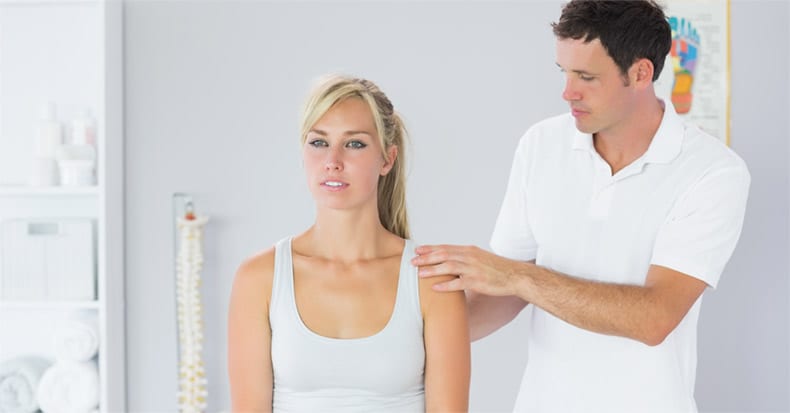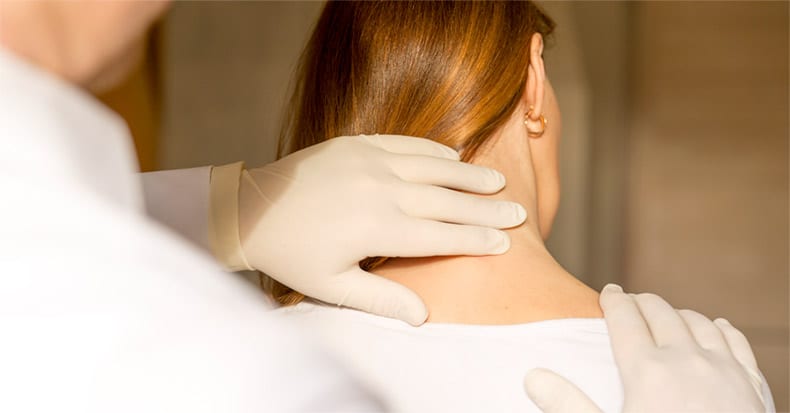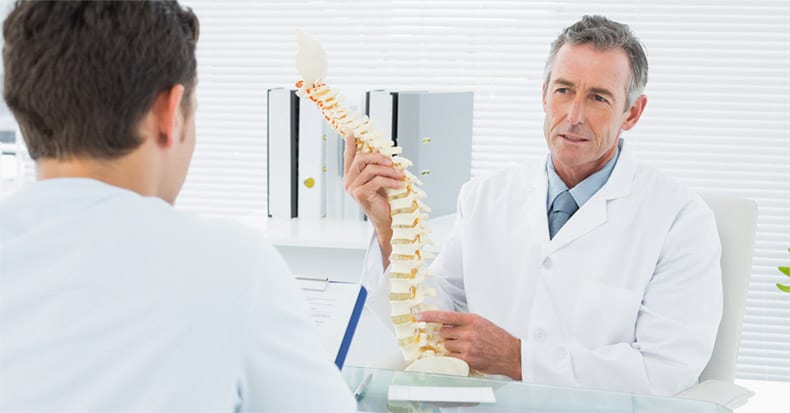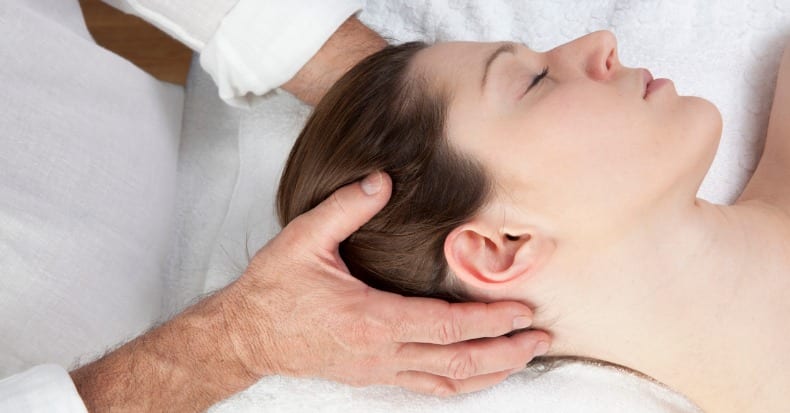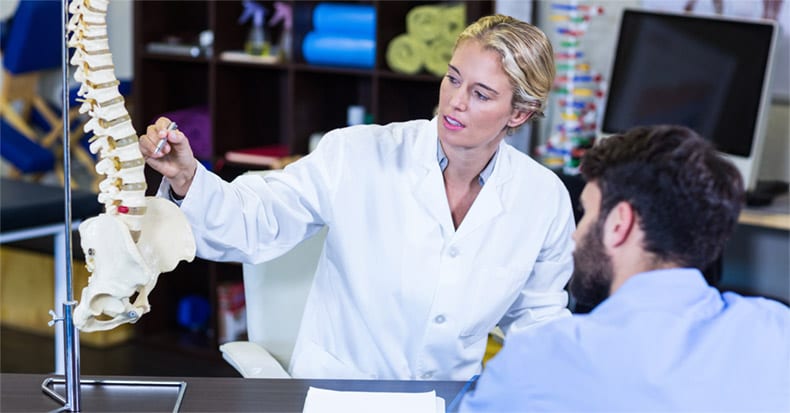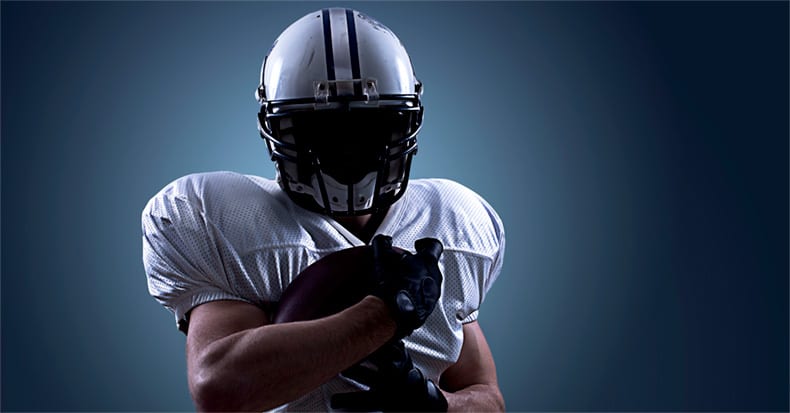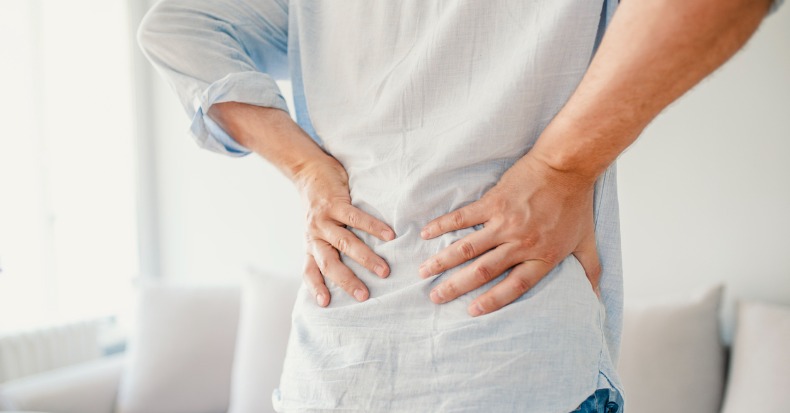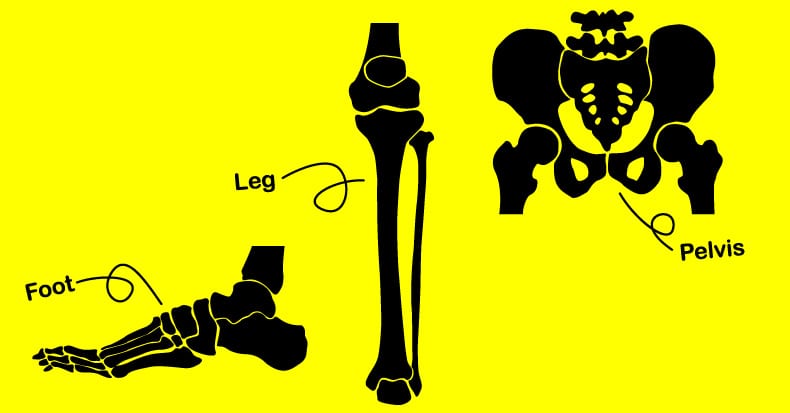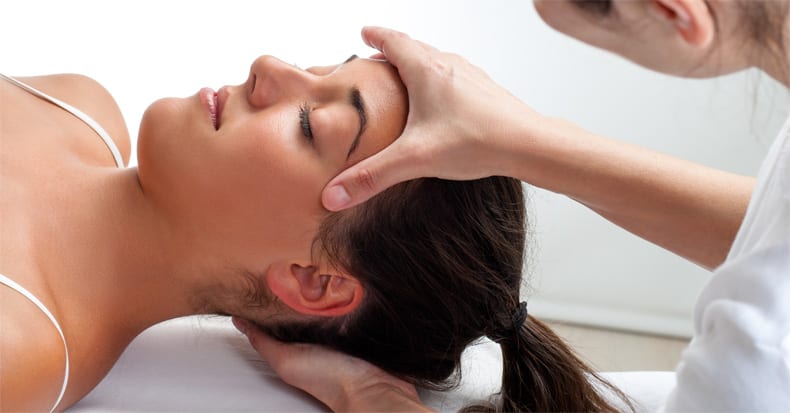Chiropractic spinal adjustments (specific line-of-drive manipulations) are quite effective for the management of spinal musculoskeletal complaints and injuries. This is not controversial. Studies documenting the clinical effectiveness of chiropractic and spinal manipulation for the management of spinal musculoskeletal complaints and injuries have appeared in the literature for more than half a century (1, 2, 3, 4, 5, 6, 7, 8, 9, 10).
Consequently, in this modern era of maximizing clinical outcomes, it is commonplace for spine pain clinical practice guidelines to include chiropractic and/or spinal manipulation (11, 12, 13, 14, 15).
A related concept to clinical effectiveness of chiropractic and spinal manipulation for the management of spinal musculoskeletal complaints and injuries is assessing the cost effectiveness of such chiropractic care. Here is presented a review of published studies assessing the cost effectiveness of chiropractic care for musculoskeletal complaints.
•••••
Preliminary Academic Theoretical Evidence
In 2012, Ronald Donelson, MD, and colleagues published a study in the journal Physical Medicine and Rehabilitation titled (16):
Is It Time to Rethink the Typical Course of Low Back Pain?
In this study the authors document that recurrent low back pain episodes were common and numerous, occurring in 73% of low back pain episodes. They note that these recurrences often worsened over time, often becoming severe and chronic. Importantly, they indicate that 84% of total medical costs for patients with LBP are related to recurrences.
In 2011, Manuel Cifuentes, MD, PhD, and colleagues published a study in the Journal of Occupational and Environmental Medicine titled (17):
Health Maintenance Care in Work-Related Low Back Pain
and Its Association With Disability Recurrence
In this study the authors defined maintenance care as treatment given to patients after recovery from a low back pain episode, delivered in an effort to reduce episodes of recurrences. They noted that maintenance chiropractic care significantly reduced the incidence of low back pain recurrence.
If chiropractic maintenance care reduced incidences of low back pain recurrence, and if recurrence is responsible for the majority of low back pain treatment costs, it would suggest that chiropractic care is quite cost effective for the treatment of low back pain. The authors state:
Chiropractic patients had “less expensive medical services and shorter initial periods of disability than cases treated by other providers.”
Chiropractic patients had “fewer surgeries, used fewer opioids, and had lower costs for medical care than the other provider groups.”
These statements further support the cost effectiveness and cost savings associated with chiropractic care for low back pain.
Pertaining to the value of maintenance care delivered by chiropractors, a PubMed indexed article was published on the topic in 2011, titled (18):
A Theoretical Basis for Maintenance Spinal Manipulative Therapy
for the Chiropractic Profession
In this article, Dr. David Taylor presents an anatomical and physiological basis for maintenance chiropractic spinal manipulation. His conclusions are the benefits of such care are lost if not delivered between every 2-4 weeks.
Cost Assessment Evidence
In 2010, Richard Liliedahl, MD, and colleagues published a study in the Journal of Manipulative and Physiological Therapeutics titled (19):
Cost of Care for Common Back Pain Conditions Initiated with Chiropractic Doctor vs. Medical Doctor/Doctor of Osteopathy as First Physician
The primary aim of this study was to determine if there are differences in the cost of low back pain care when a patient is able to choose a course of treatment with a medical doctor (MD) versus a doctor of chiropractic (DC), given that his/her insurance provides equal access to both provider types. The authors identified 85,402 subjects who meet the diagnostic criteria for a low back pain claim. They chose low back pain as the focus of study because it is a condition that is prevalent, costly, and is treated by both medical doctors and chiropractors.
The authors note that back problems are one of the top 10 most costly conditions treated in the United States. There are hundreds of millions of patient visits to chiropractors yearly. Twenty percent of those reporting back or neck pain seek chiropractic care, and patients are highly satisfied with chiropractic care.
The authors “found statistically significant lower costs in episodes of care initiated with a DC as compared to an MD.” They state:
“Our results support a growing body of evidence that chiropractic treatment of low back pain is less expensive than traditional medical care.”
“We found that episode cost of care for LBP initiated with a DC is less expensive than care initiated through an MD.”
“Paid costs for episodes of care initiated with a DC were almost 40% less than episodes initiated with an MD.”
“Our results suggest that insurance companies that restrict access to chiropractic care for LBP may, inadvertently, be paying more for care than they would if they removed these restrictions.”
“Beneficiaries in our sampling frame had lower overall episode costs for treatment of low back pain if they initiated care with a DC, when compared to those who initiated care with an MD.”
•••••
In 2012, a study was published in the Journal of Occupational and Environmental Medicine titled (20):
Value of Chiropractic Services at an On-Site Health Center
The authors noted that the direct costs in the United States for the treatment of back and neck pain are escalating. Back problems are the second most common cause of disability in the United States, accounting for tens of billions of dollars in lost wages.
The authors note that chiropractic patients have lower utilization of ancillary medical services, and that chiropractic care is less invasive and more conservative than alternative treatments. They state:
“Patients with chiropractic coverage seemed to be avoiding more surgeries, hospitalizations, and radiographic imaging procedures.”
Consequently, the authors acknowledge that chiropractic care has the potential to reduce the economic and clinical burden of musculoskeletal conditions and to reduce indirect costs, including absenteeism and productivity losses. They conclude:
“Compared with alternatives, including physician visits, hospitalizations, and surgery, chiropractic care is considered a cost-effective treatment.”
•••••
In 2013, Benjamin J. Keeney, PhD, and colleagues published a study in the journal Spine titled (21):
Early Predictors of Lumbar Spine Surgery after Occupational Back Injury:
Results from a Prospective Study of Workers in Washington State
This was a prospective population-based cohort study whose objective is to identify early predictors of lumbar spine surgery within 3 years after occupational back injury, noting:
“Back pain is the most costly and prevalent occupational health condition among the U.S. working population.”
The authors reference that the most costly aspect of treating occupational back pain is the cost of spinal surgery. They reasoned that if good clinical outcomes could be obtained without spinal surgery there would be substantial costs savings, stating:
“Reducing unnecessary spine surgeries is important for improving patient safety and outcomes and reducing surgery complications and health care costs.”
In this three-year study, approximately 43% of injured workers whose first provider was a surgeon underwent spinal surgery. In contrast, when the first provider consulted was a chiropractor, the surgery rate was only 1.5%. The reduced surgery rate with chiropractic was a stunning 78%. The authors state:
“42.7% of workers who first saw a surgeon had surgery, in contrast to only 1.5% of those who saw a chiropractor.” “There was a very strong association between surgery and first provider seen for the injury, even after adjustment for other important variables.” “It is possible that these findings indicate that “who you see is what you get.”
“In Washington State worker’s compensation, injured workers may choose their medical provider. Even after controlling for injury severity and other measures, workers with an initial visit for the injury to a surgeon had almost nine times the odds of receiving lumbar spine surgery compared to those seeing primary care providers, whereas workers whose first visit was to a chiropractor had significantly lower odds of surgery.”
These authors also indicate that previous studies have shown:
- Those with occupational back injuries who first saw a chiropractor had lower odds of chronic work disability.
- Those seeing chiropractors for occupational back pain had “higher rates of satisfaction with back care.”
They suggest that it is wise to use a “gatekeeper” for patients who suffer occupational back injury. This article presents substantial reason for why such a gatekeeper should be a chiropractor. The reduction of back surgeries in those consulting chiropractors for back pain represents a substantial costs savings, and also the highest levels of back care satisfaction.
•••••
In 2015, a study was published in the journal BioMed Central (BMC) Health Services Research titled (22):
A Systematic Review Comparing the Costs of Chiropractic Care
to Other Interventions for Spine Pain in the United States
This is a comprehensive study designed to compare health care costs for patients with spine pain who received chiropractic care v. care from other healthcare providers. The search included studies published in English between 1993 and 2015. The search uncovered 1,276 citations and 25 eligible studies. This study was huge, with the number of members/episodes included in groups receiving chiropractic care ranging from 97 to 36,280.
The authors note that for those with spine pain, 61% seek care from a medical physician (MD or DO), 28% from a chiropractor, and 11 % from both a medical physician and a physical therapist. Chiropractors in the United States treat spine pain almost exclusively, with the most common indication for care being low back pain (68%), followed by neck pain (12%), and mid-back pain (6%). Only 3% of office visits to medical physicians are related to spine pain.
Chiropractors have more confidence in their ability to manage spine pain than medical physicians. Patients with spine pain report higher levels of satisfaction with chiropractic care than care from a medical physician.
The findings of this review were that 92% of the studies reported that health care costs were lower for members whose spine pain was managed by chiropractic care than by other providers, by a mean of 36%. The authors state:
“In general, the findings in this review suggest that health care costs may be lower when spine pain is managed with chiropractic care in the US, even if such differences are sometimes attributable to sociodemographics, clinical, or other factors rather than healthcare providers.”
“These findings echo that of a review published in 1993 that examined studies in which LBP was managed by spinal manipulation, chiropractic care, other interventions (e.g. physical modalities, medications, exercise) throughout the world (e.g. Australia, Canada, Egypt, Italy, the Netherlands, New Zealand, Nigeria, Sweden, United Kingdom, and US). Based on the favorable short-term clinical improvements and lower costs of care reported in those studies, the previous review concluded that health care costs could be reduced if a higher proportion of patients with spine pain received chiropractic care rather than other interventions, and recommended a greater integration of chiropractors into the publicly financed health care system.”
•••••
In 2016, a study was published in the Journal of Occupational Rehabilitation titled (23):
Association Between the Type of First Healthcare Provider
and the Duration of Financial Compensation for Occupational Back Pain
The objective of this study was to compare the duration of financial compensation and the occurrence of a second episode of compensation for back pain among injured workers seen by three types of first healthcare providers (physicians, chiropractors, and physiotherapists). The study used a cohort of 5,511 injured workers who were followed for a period of 2 years.
The authors note that at any given point, the prevalence of back pain is about 9% of the population. The lifetime prevalence of back pain is about 85%. Back pain is the most common occupational injury in Canada and the United States. Back pain causes more years of life with disability than any of the other 291 conditions studied.
These authors found chiropractic care for back pain to be exceptionally cost effective, noting:
“Workers who first saw a chiropractor were less likely to become chronically work disabled.”
Over the first 149 days, the “workers who first sought care from a chiropractor had a significantly greater hazard of ending their compensation episode compared with the workers who first consulted a physician and those who first consulted a physiotherapist.”
“When compared with medical doctors, chiropractors were associated with shorter durations of compensation and physiotherapists with longer ones.”
“In accordance with our findings, workers who first sought chiropractic care were less likely to be work-disabled after 1 year compared with workers who first sought other types of medical care.”
“We found that the workers who sought chiropractic care experienced shorter durations of compensation.”
“Chiropractic patients experience the shortest duration of compensation, and physiotherapy patients experience the longest.”

•••••
Another study from the same group was also published in 2016, titled (24):
Workers’ Characteristics Associated with the Type of
Healthcare Provider First Seen for Occupational Back Pain
The study used 5,520 low back-injured workers to compare the factors that drive patients’ decision to choose a chiropractor, physician or physiotherapist as their first healthcare provider. They note that about one-third of low back pain is attributed to occupational injury. These authors found that the workers who first sought a physician did not have higher odds of having a severe injury.
These authors note that low back pain is “often recurrent or chronic.”
Back pain is a leading cause of disability worldwide.
Once again the cost effectiveness of chiropractic care was evident. The authors noted:
“Chiropractic care was associated with lower use of medication, radiographic investigation, and surgery.”
“We found that workers who reported a previous similar injury were more likely to seek physiotherapy and chiropractic care.”
“It is reasonable to think that workers will seek care that they perceived as effective for a similar condition, compensated or not, in the past.”
“Our results suggest that workers suffering from more severe conditions are more likely to seek physiotherapy and chiropractic care than medical care.”
•••••
In 2017, a study was published in the journal Complementary Therapies in Medicine titled (25):
Alternative Medicine, Worker Health, and
Absenteeism in the United States
This paper reviews the literature on healthcare utilization and absenteeism by exploring whether Complementary and Alternative Medicine (CAM) treatment is associated with fewer workdays missed due to illness. With the high costs of illness-related absenteeism, employers and policy makers are interested in treatments and interventions that might reduce sick days and improve worker health. This study investigates whether workers that visit a CAM practitioner exhibit improved health or miss fewer workdays due to illness. The studies involved 8820 subjects.
Five different CAM practices were considered:
- Active mind-body (e.g. yoga, meditation)
- Naturopathy
- Massage therapy
- Chiropractic
- Acupuncture
In 2012, health related absenteeism costs an estimated $153 billion annually in the United States. Most of this absenteeism is attributed to chronic health conditions, contributing significantly to employer healthcare costs. The major chronic condition contributing to absenteeism was low back pain. Specifically, in this study, chronic low back pain occurred in about 25% of the participants.
In this study of 8,820 subjects, those who utilized CAM, including chiropractic, showed the following health benefits:
- Reduced work absenteeism
- Fewer other health care costs
- Improved health
- Preventive health care services
Specifically, chiropractic was “significantly associated with improved health.”
•••••
The Anheuser-Busch Benningfield Experience
Starting in 2012, the Anheuser-Busch distributing company of Peoria, Illinois, Brewers Distributing, attempted something novel in an effort to reduce it’s workers compensation costs: they hired a young chiropractor to work on-site one day per week. The chiropractor’s assignment was to treat small injuries in an effort at preventing them from becoming larger and more expensive, and to prevent injuries all together.
Two years after implementation of this program, the startling statistics began quite evident (26):
It “saved Brewers a significant amount of money. In the two years since it was implemented, the number of employee sick days has declined by 22%, while the accident rate has been cut in half. Consequently, the company’s workers’ compensation costs have experienced a dramatic reduction with premiums declining by more than 25%.”
Updated data from this project are not available through 2016 (27). These findings include:
- 10% reduction in healthcare premiums
- 22% reduction in employee sick days
- 27% reduction in workers’ compensation premiums
- 50% reduction in accident rates
The cost effectiveness and cost savings of this program are substantial and stunning.
•••••
Studies continue to show that not only is chiropractic care effective for musculoskeletal pain, but that it is also cost effective, a money saver, and patients have higher levels of satisfaction with their outcomes. All employers, insurance companies and government healthcare reimbursement programs should be aware of these results.
REFERENCES
- Parsons WB, Cumming JDA; Manipulation in Back Pain; Canadian Medical Association Journal; July 15, 1958; Vol. 79; pp. 013-109.
- Edwards BC; Low Back Pain and Pain Resulting From Lumbar Spine Conditions: A Comparison of Treatment Results; The Australian Journal of Physiotherapy; September 1969; Vol. 15; No. 3; pp. 104-110.
- Kirkaldy-Willis WH, Cassidy JD; Spinal Manipulation in the Treatment of Low Back Pain; Canadian Family Physician, March 1985, Vol. 31, pp. 535-540.
- Meade TW, Dyer S, Browne W, Townsend J, Frank OA; Low back pain of mechanical origin: Randomized comparison of chiropractic and hospital outpatient treatment; British Medical Journal; Volume 300, June 2, 1990, pp. 1431-7.
- Giles LGF, Muller R; Chronic Spinal Pain: A Randomized Clinical Trial Comparing Medication, Acupuncture, and Spinal Manipulation; Spine, July 15, 2003; 28(14):1490-1502.
- Muller R, Lynton G.F. Giles LGF, DC, PhD; Long-Term Follow-up of a Randomized Clinical Trial Assessing the Efficacy of Medication, Acupuncture, and Spinal Manipulation for Chronic Mechanical Spinal Pain Syndromes; Journal of Manipulative and Physiological Therapeutics; January 2005, Volume 28, No. 1.
- Kirkaldy-Willis WH, Managing Low Back Pain, Churchill Livingstone, 1983, p. 19.
- Cifuentes M, Willetts J, Wasiak R; Health Maintenance Care in Work-Related Low Back Pain and Its Association With Disability Recurrence; Journal of Occupational and Environmental Medicine; April 14, 2011; Vol. 53; No. 4; pp. 396-404.
- Senna MK, Machaly SA; Does Maintained Spinal Manipulation Therapy for Chronic Nonspecific Low Back Pain Result in Better Long-Term Outcome? Randomized Trial; SPINE; August 15, 2011; Volume 36, Number 18; pp. 1427–1437.
- Ghildayal N, Johnson PJ, Evans RL, Kreitzer MJ; Complementary and Alternative Medicine Use in the US Adult Low Back Pain Population; Global Advances in Health and Medicine; January 2016; Vol. 5; No. 1; pp. 69-78.
- Roger Chou, MD; Amir Qaseem, MD, PhD, MHA; Vincenza Snow, MD; Donald Casey, MD, MPH, MBA; J. Thomas Cross Jr., MD, MPH; Paul Shekelle, MD, PhD; and Douglas K. Owens, MD, MS; Diagnosis and Treatment of Low Back Pain; Annals of Internal Medicine; Volume 147, Number 7, October 2007, pp. 478-491.
- Roger Chou, MD, and Laurie Hoyt Huffman, MS; Non-pharmacologic Therapies for Acute and Chronic Low Back Pain; Annals of Internal Medicine; October 2007, Volume 147, Number 7, pp. 492-504.
- Globe G, Farabaugh RJ, Hawk C, Morris CE, Baker G, DC, Whalen WM, Walters S, Kaeser M, Dehen M, DC, Augat T; Clinical Practice Guideline:
Chiropractic Care for Low Back Pain; Journal of Manipulative and Physiological Therapeutics; January 2016; Vol. 39; No. 1; pp. 1-22. - Wong JJ, Cote P, Sutton DA, Randhawa K, Yu H, Varatharajan S, Goldgrub R, Nordin M, Gross DP, Shearer HM, Carroll LJ, Stern PJ, Ameis A, Southerst D, Mior S, Stupar M, Varatharajan T, Taylor-Vaisey A; Clinical practice guidelines for the noninvasive management of low back pain: A systematic review by the Ontario Protocol for Traffic Injury Management (OPTIMa) Collaboration; European Journal of Pain; Vol. 21; No. 2 (February); 2017; pp. 201-216.
- Qaseem A, Wilt TJ, McLean RM, Forciea MA; Noninvasive Treatments for Acute, Subacute, and Chronic Low Back Pain: A Clinical Practice Guideline From the American College of Physicians; For the Clinical Guidelines Committee of the American College of Physicians; Annals of Internal Medicine; April 4, 2017; Vol. 166; No. 7; pp. 514-530.
- Donelson R, McIntosh G, Hall H; Is It Time to Rethink the Typical Course of Low Back Pain? Physical Medicine and Rehabilitation (PM&R); Vol. 4; No. 6; June 2012; pp. 394–401.
- Cifuentes M, Willetts J, Wasiak R; Health Maintenance Care in Work-Related Low Back Pain and Its Association With Disability Recurrence; Journal of Occupational and Environmental Medicine; April, 2011; Vol. 53; No. 4; pp. 396-404.
- Taylor DN; A theoretical basis for maintenance spinal manipulative therapy for the chiropractic profession; Journal of Chiropractic Humanities December 2011; Vol. 1; No. 1; pp. 74-85.
- Liliedahl RL, Finch, Axene DV, Goertz CM; Cost of Care for Common Back Pain Conditions Initiated with Chiropractic Doctor vs. Medical Doctor/Doctor of Osteopathy as First Physician; Experience of One Tennessee-Based General Health Insurer; Journal of Manipulative and Physiological Therapeutics; November/December 2010; Vol. 33; No. 9; pp. 640-643.
- Krause CA, Kaspin L, Gorman KM, Miller RM; Value of Chiropractic Services at an On-Site Health Center; Journal of Occupational and Environmental Medicine; August 2012; Vol. 54; No. 8; pp. 917-921.
- Keeney BJ, Fulton-Kehoe D, Turner JA, Wickizer TM, Chan KCG, Franklin GM; Early Predictors of Lumbar Spine Surgery after Occupational Back Injury: Results from a Prospective Study of Workers in Washington State; Spine; May 15, 2013; Vol. 38; No. 11; pp. 953-964.
- Simon Dagenais S, O’Dane Brady O, Scott Haldeman S, Pran Manga P; A Systematic Review Comparing the Costs of Chiropractic Care to Other Interventions for Spine Pain in the United States; BioMed Central (BMC) Health Services Research; October 19, 2015; 15:474.
- Blanchette MA, Rivard M, Dionne CE, Hogg-Johnson S, Steenstra I; Association Between the Type of First Healthcare Provider and the Duration of Financial Compensation for Occupational Back Pain; Journal of Occupational Rehabilitation; September 17, 2016; Vol. 27; No. 3; pp. 382-392.
- Blanchette MA, Rivard M, Dionne CE, Hogg-Johnson S, Steenstra I; Workers’ Characteristics Associated with the Type of Healthcare Provider First Seen for Occupational Back Pain; BMC Musculoskeletal Disorders; October 2016; Vol. 17; No. 1; 428.
- Rybczynski K; Alternative Medicine, Worker Health, and Absenteeism in the United States; Complementary Therapies in Medicine; June 2017; Vol. 32; pp. 116–128.
- Locke A; Saving Backs…And Costs: On-site Chiropractic Care and Improve Employee Health While Cutting Overall Costs; Peoria Magazines; September 2014; pp. 83-84.
Personal communication for the participants; Will be published soon.
